Zhenwei Xie
Known-plaintext attack and ciphertext-only attack for encrypted single-pixel imaging
May 31, 2019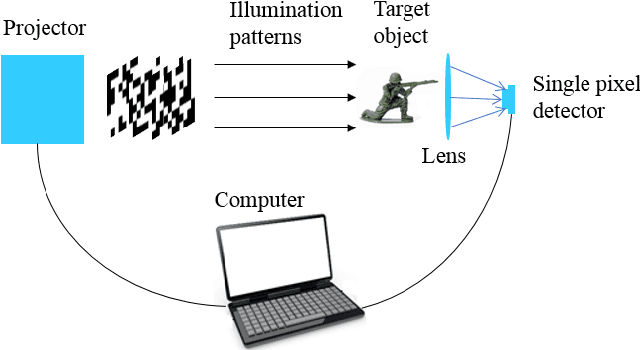
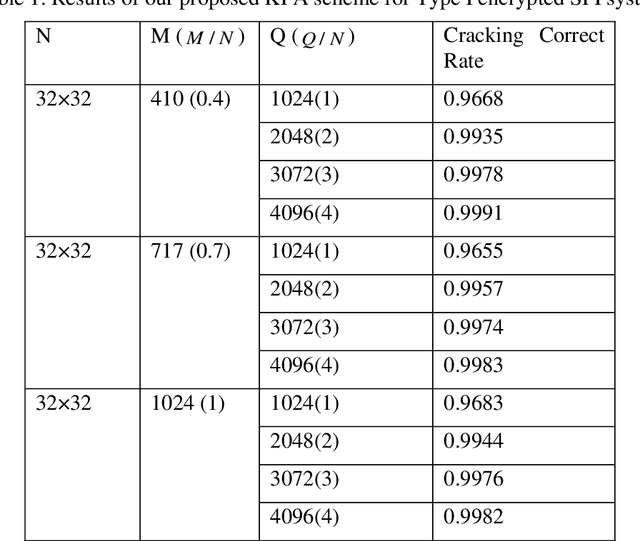
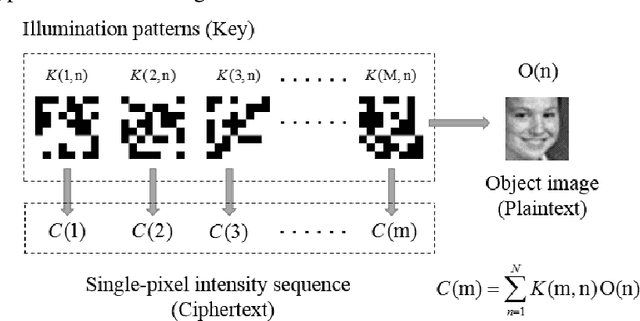
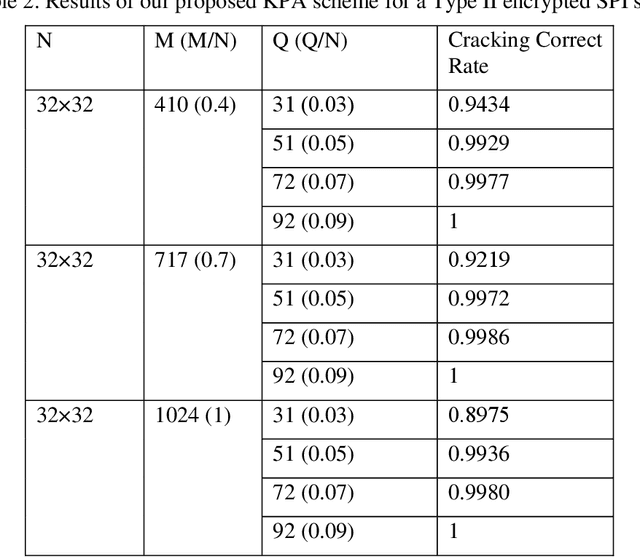
Abstract:In many previous works, a single-pixel imaging (SPI) system is constructed as an optical image encryption system. Unauthorized users are not able to reconstruct the plaintext image from the ciphertext intensity sequence without knowing the illumination pattern key. However, little cryptanalysis about encrypted SPI has been investigated in the past. In this work, we propose a known-plaintext attack scheme and a ciphertext-only attack scheme to an encrypted SPI system for the first time. The known-plaintext attack is implemented by interchanging the roles of illumination patterns and object images in the SPI model. The ciphertext-only attack is implemented based on the statistical features of single-pixel intensity values. The two schemes can crack encrypted SPI systems and successfully recover the key containing correct illumination patterns.
Optical machine learning with incoherent light and a single-pixel detector
May 09, 2019



Abstract:The concept of optical diffractive neural network (DNN) is proposed recently, which is implemented by a cascaded phase mask architecture. Like an optical computer, the system can perform machine learning tasks such as number digit recognition in an all-optical manner. However, the system can only work under coherent light illumination and the precision requirement in practical experiments is quite high. This paper proposes an optical machine learning framework based on single-pixel imaging (MLSPI). The MLSPI system can perform the same linear pattern recognition task as DNN. Furthermore, it can work under incoherent lighting conditions, has lower experimental complexity and being easily programmable.
A Parallel Optical Image Security System with Cascaded Phase-only Masks
Feb 21, 2019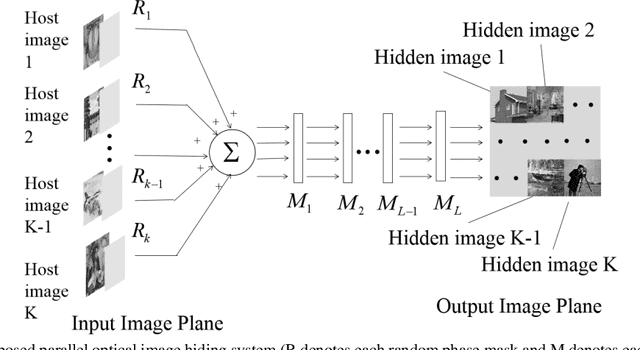



Abstract:In many previous works, a cascaded phase-only mask (or phase-only hologram) architecture is designed for optical image encryption and watermarking. However, one such system usually cannot process multiple pairs of host images and hidden images in parallel. In our proposed scheme, multiple host images can be simultaneously input to the system and each corresponding output hidden image will be displayed in a non-overlap sub-region in the output imaging plane. Each input host image undergoes a different optical transform in an independent channel within the same system. The multiple cascaded phase masks (up to 25 layers or even more) in the system can be effectively optimized by a wavefront matching algorithm.
 Add to Chrome
Add to Chrome Add to Firefox
Add to Firefox Add to Edge
Add to Edge